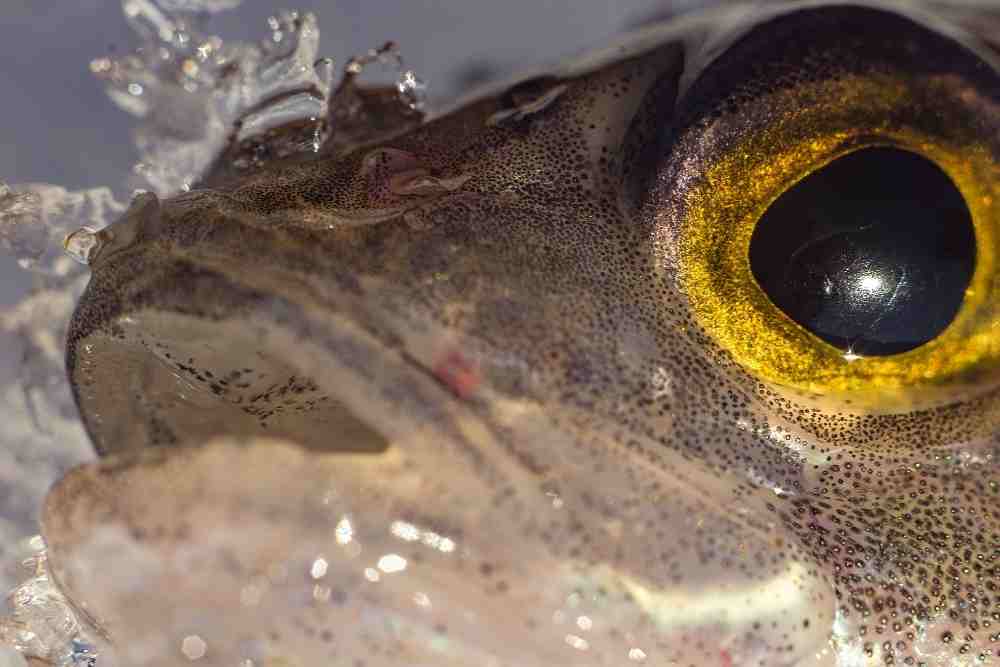Fish do not have eyelids, but their eyes are protected by a transparent membrane. This membrane is attached to the back of the eye and is covered with a thin layer of oil. This layer helps to reduce glare and protect the eye from water droplets that can damage it.

What are Eyelids
Eyelids are thin skin membranes that cover and protect the eyes. Eyelids keep dirt, dust, and other particles from entering the eye and also keep the eyes moist. The eyelashes help to keep the eyelids clean and protect them from the sun.
The Function of Eyelids
Eyelids are thin, fleshy folds of skin that protect the eyes from injury and keep out dust and other particles.
Each eyelid is divided into three parts: the upper eyelid, the lower eyelid, and the inner eyelid.
The upper eyelid is attached to the eyebrow and helps to keep sweat and other particles from entering the eye.
The lower eyelid is attached to the cheekbone and helps to keep moisture from evaporating from the eye.
The inner eyelid is hidden behind the upper and lower eyelids and helps to lubricate the eye.
Do Fish Have Eyelids
Fish do not have any external eyelids, instead of relying on a transparent film that covers their eyes to protect them from the environment and keep them moist.
This film, called the nictitating membrane, can be drawn across the eye for protection or to clear away debris.
Some fish also have a third eyelid located on the inside of their eye that helps keep the surface wet.
Though they may not have eyelids in the traditional sense, fish do have a way of protecting their eyes.
Fish secrete a glycoprotein slime from the cells of the epidermis that lines their skin.
This slime creates a barrier between the fish and the environment and helps to keep their eyes moist.
Additionally, some fish have nictitating membranes, which are thin, transparent membranes that extend from the inside corner of the eye to cover the pupil and protect against debris and parasites.
Certain species of fish have membranes which act as protective eyelids to allow them to see regardless of the depth of water in relative darkness.
Scientists assert that those fishes that have transparent membranes are far more adept in viewing underwater objects and other fish species than their cousins.
Animals such as sharks do not have eyelid hairs; however this job is only there to shield their eyes from damage.
They do not perform this task for any other purpose. Unlike us, fish do not have eyelid hairs. The water around their bodies helps eyes to stay clean and wet, thus invalidating the possibility of a blink.
Do Fish Need Eyelids
Fish don’t have eyelids as we do, but they do have a mechanism for keeping their eyes clean and free of debris.
Most fish have a movable flap of skin called a nictitating membrane that they can use to clear their eyes when needed.
This membrane is located just below the eye and can be drawn across the eye to clear any debris.
Some fish also have a transparent eyelid-like structure called an operculum that they can close over their eye when protection is needed.
Do Fish Blink
Fish do not blink because they don’t have eyelids. Fish secrete a protective layer of mucous over their eyes which helps to keep the water out and their eyes clean. This slimy layer also contains some enzymes that help break down food.
Some fish, like sharks and rays, can roll their eyes back so that the whites are showing when they’re attacking prey.
Do Fish Sleep With Their Eyes Open
Yes, fish sleep with their eyes open. This allows them to stay alert for danger and keep an eye on their surroundings.
Fish use a process called “sleep swimming” to rest, which is when they slow down their movements and drift along with the current.
Final Words
In conclusion, it appears that fish do not have eyelids as mammals do. Instead, their eyes are protected by a thin layer of skin that covers and moves with the eyeball.
However, they do have a nictitating membrane which helps protect their eyes and keep them moist. Although fish cannot blink, they can still see and are capable of living a full and healthy life.